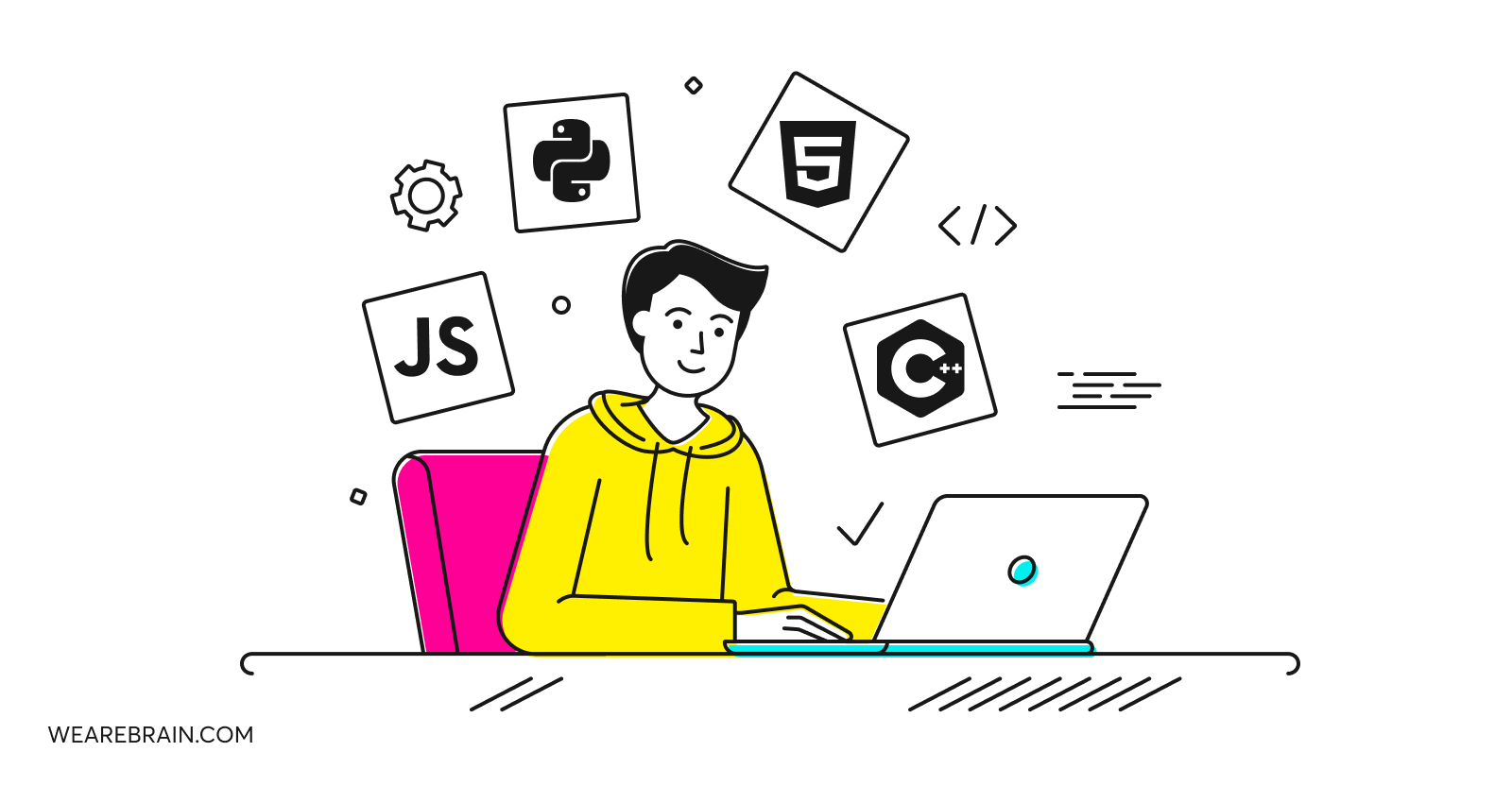The future of programming languages

As the technologies powering our modern world continue to evolve at an unprecedented pace, the tools and programming languages used to build software are also rapidly changing to keep up with new demands.
As a result, it is critical that software developers continuously adapt and learn new trends to stay abreast with the future of coding. For example, leveraging the best code editors will always keep your projects relevant and scaleable. While predicting the exact future of programming languages is impossible, there are several emerging trends and programming languages that are shaping the landscape of tomorrow’s software development.
Let’s explore some key software development trends and innovations that are defining the future of programming.
Domain-specific languages (DSLs)
General-purpose languages like Python or Java aren’t designed to solve specific problems efficiently, and this is where domain-specific languages (DSLs) come into play. DSLs are designed to solve particular problems within a specific application or domain.
As software development becomes more specialised, there’s a growing interest in domain-specific languages catered to specific industries or problems. DSLs provide improved levels of abstraction and productivity by focusing on the particular needs of a given domain. Examples include MATLAB for scientific computing, SQL for database management, and Solidity for smart contracts on the blockchain.
WebAssembly (Wasm)
WebAssembly, or Wasm, is an exciting technology set to redefine the web application building process. Wasm is a binary instruction format designed to enable high-performance execution of code on web browsers using languages other than JavaScript.
Programmers can perform safe and efficient execution directly in web browsers using languages such as C, C++, and Rust, providing almost native speed and performance. Wasm allows web applications to go beyond the limitations of JavaScript, enabling a wider range of languages for front-end and back-end development. This opens up new possibilities for web-based gaming, complex simulations, and even video editing directly in the browser.
Machine learning and AI integration
As AI and machine learning (ML) continue to advance, there’s a growing need for programming languages and frameworks that facilitate the development of AI-powered applications. Programming languages such as Python are evolving to integrate ML and AI seamlessly with its libraries TensorFlow and PyTorch empowering developers to build AI-driven applications.
The future of coding will see the emergence of more specialised machine learning languages like Julia and Swift that will reshape the software development landscape. Additionally, the role of machine learning and artificial intelligence (AI) in code optimisation and predictive maintenance will bridge the gap between data and code for a more unified development process.
Low-code and no-code platforms
Low-code and no-code (LC/NC) platforms essentially democratise the web development processes by making it possible for people with limited programming experience to build functional software applications. They also allow seasoned programmers to build apps and sites far more efficiently.
These platforms have visual interfaces and pre-built components that simplify the development process, reducing the need for extensive coding skills. While they won’t replace traditional programming languages, LC/NC platforms are influencing the software development landscape by making it easier to create functional applications without a deep understanding or expertise in programming.
We’ll likely see increased collaboration with other departments and individuals, such as data and/or business analysts and designers who can add new perspectives into the software development process.
Quantum computing languages
With the emergence of quantum computers, a new class of specialised programming languages is being developed to harness the potential of quantum processors. Quantum programming languages like Q# and Quipper are being developed to address the unique challenges posed by quantum computing.
These languages enable the expression of complex quantum algorithms and take advantage of the unique characteristics of quantum systems. The future of programming will invariably involve the rise of a new class of quantum programmers specialised to build and evolve this promising area of computational progress.
Functional programming
Although functional programming has been around for a few decades, it’s set to undergo a resurgence thanks to its suitability for parallel and distributed computing. The functional programming paradigm emphasises immutability, pure functions, and declarative code style, which can lead to more robust and maintainable software.
Functional programming like Haskell, Elixir, Scala and Clojure are gaining traction in various domains as they enhance code quality, promote concurrency, and address the challenges of modern software development. Interestingly, this paradigm can also be adopted by popular languages like JavaScript and Python, ensuring its compatibility with other coding languages that are shaping the future of software development.
Serverless computing
Serverless computing is changing the way programmers deploy and manage applications. This approach allows developers to focus on what they do best – writing code – without having to deal with the details of server provisioning and infrastructure management. While serverless computing is not considered a programming language, we’ve included it here due to its influence on how developers write code: a structured and focused approach to small, independent functions.
Serverless platforms like AWS Lambda, Azure Functions, and Google Cloud Functions have gained immense popularity due to their scalability and cost-effectiveness. Added to this, serverless computing provides development teams with a shorter time to market, reduced operational costs, and dynamic scalability.
Traditional mobile and web applications such as chatbots and live streaming services benefit from serverless computing due to its ability to serve as a Function-as-a-Service (FaaS). This means that programmers can write modular code in response to real-time events, such as an influx in traffic or live data stream management.
Green coding
As the world faces environmental challenges, the tech industry will continue to drive its sustainability efforts to lower energy consumption. Green coding, or green software development, involves writing energy-efficient code and optimising software that reduces resource consumption. The future of programming will favour languages and frameworks that prioritise energy efficiency and sustainable computing practices.
The top energy-efficient programming languages at the moment are C, Rust, C++, Ada, Java, Pascal, and a few others. But it’s not just about code efficiency – it also involves choosing eco-friendly data centres and reducing the carbon footprint of software.
Summary
The future of programming languages is an exciting and dynamic field that we should all keep an eye on. From domain-specific languages tailored to niche industries to the potential of quantum programming for solving complex problems, the programming landscape is evolving at an unprecedented rate.
The rise of low-code and no-code platforms is democratising software development, while functional programming and serverless computing are changing how we approach code design and deployment.
Finally, as we peer into the future, we must also consider the environmental impact of our code and strive for sustainability in our software development practices.
Take a look at the best frontend trends for 2023 to see how our current software development field is ensuring a bright future.
Mario Grunitz
Working Machines
An executive’s guide to AI and Intelligent Automation. Working Machines takes a look at how the renewed vigour for the development of Artificial Intelligence and Intelligent Automation technology has begun to change how businesses operate.







